Because vinyl siding lasts so long, chances are you’ve never dealt with vinyl siding a home before. At this point, you’ve gone down the right path to meet with multiple contractors to decide who is best for the job with a reasonable price within your budget. Some contractors advise going over your existing wood siding while others recommend to remove the existing wood siding. So, which is the best way to do it to prevent potential issues in the future?
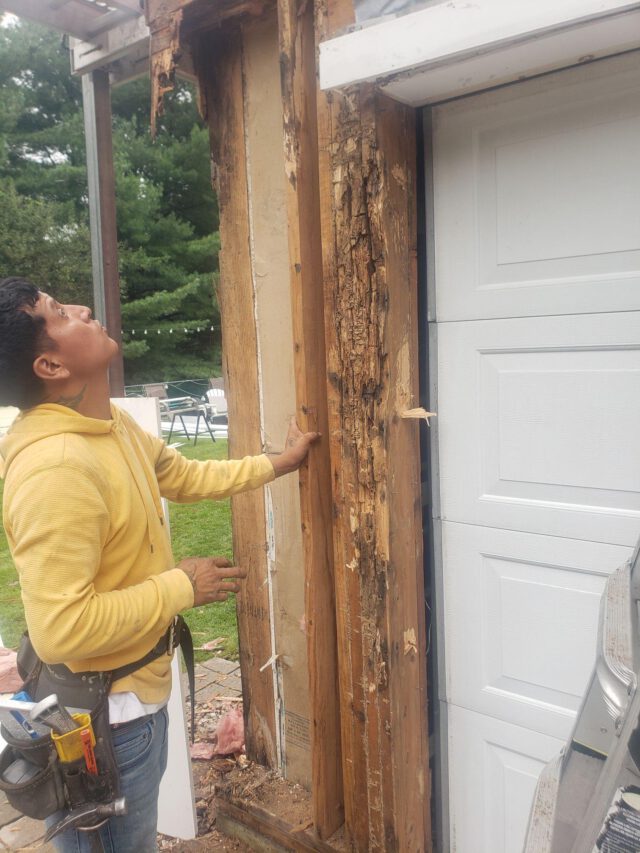
Unforeseen Rot
The issue with not removing existing wood siding is that nobody has x-ray vision. As useful as that would be, unfortunately, until you start removing the existing wood siding, there is no way to know for sure there isn’t rot or insect damage lurking underneath. If the substrate is rotting or damaged behind the existing wood siding, the integrity and stability of your home could be at stake unbeknownst to you.
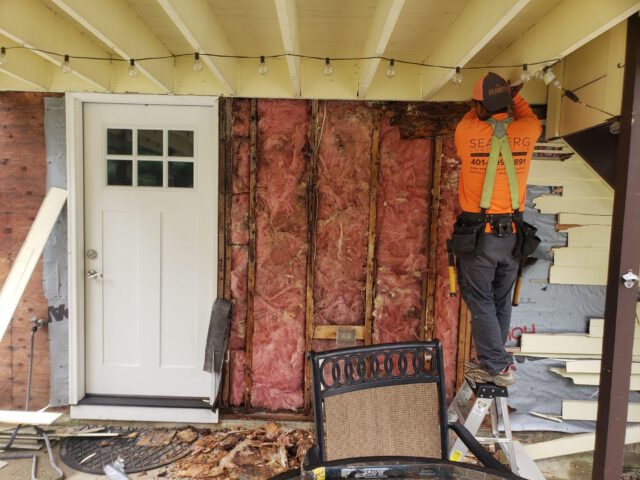
Is my contractor trying to cut corners?
If removing the existing wood siding is advised, then why do some contractors want to install vinyl siding over it? The bottom line is, time is money. The quicker the contractor can get your vinyl siding job finished, the faster they can move onto the next. These are the types of contractors you do not want to work with and likely won’t be around if and when you have an issue.
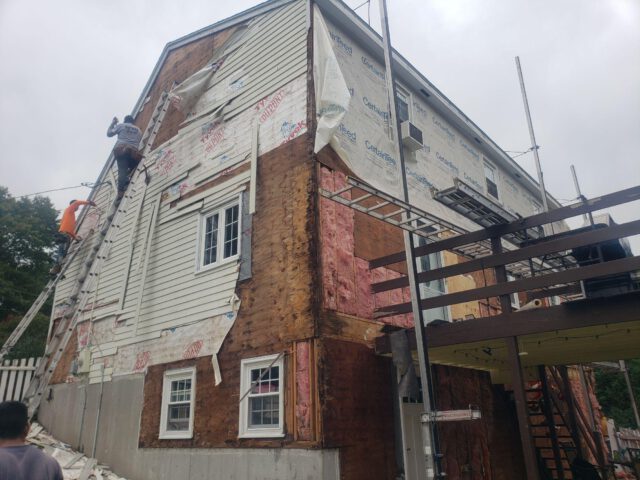
Can I save money?
Many homeowners ask if there are any savings associated with installing vinyl siding over the existing wood siding. There’s a savings on labor and disposal fees but there’s also an expense of fanfold backer board which more or less balances each other out. Fanfold backer board is installed over the wood siding to create a smooth surface to receive the new vinyl siding. There really isn’t a huge savings when all is said and done. The money you save now could go towards potential costly repairs in the future.
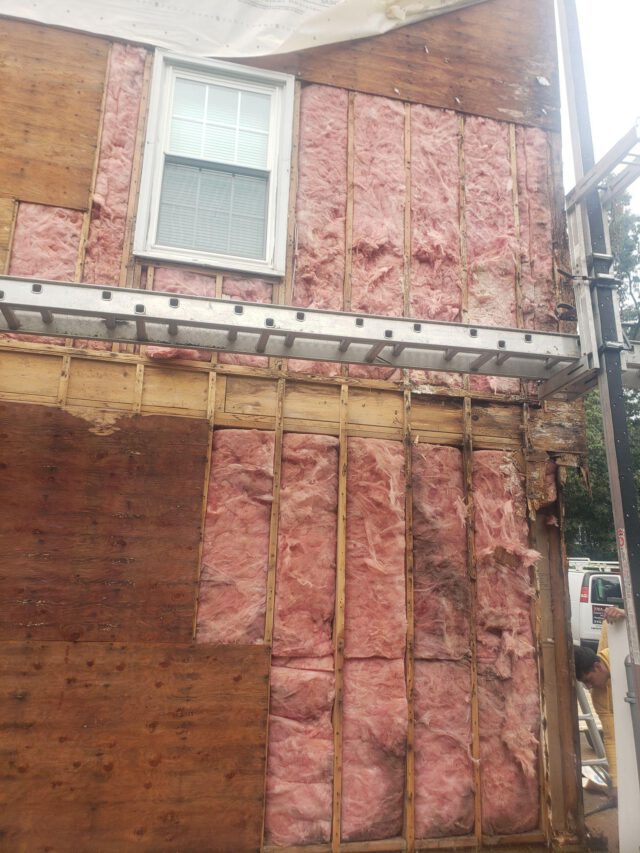
Consider the window and door trim when thinking of going over existing wood siding. By adding extra thickness of the fanfold backer board and vinyl siding to the home, the material may protrude past than the window trim. The contractor will have to build out the window and door trim causing more expense in labor and materials. In this case, installing vinyl siding over existing wood siding could cost even more than doing it the right way to begin with.
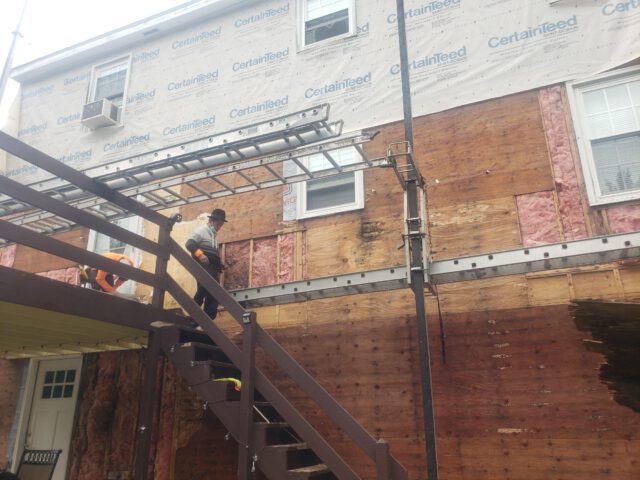
The house shown in the images above had existing wood siding. It’s a good thing we removed the wood siding first! Had we not removed the existing wood siding, we would not have uncovered extensive rot underneath. While it does add expense to the vinyl siding project to find unforeseen rot, you’d rather deal with it now than after new vinyl siding was installed. It would be a lot more expensive to remove and reinstall vinyl siding over the entire house because you didn’t know there were underlying issues.
Is it ever okay to install vinyl siding over existing wood siding?
We always suggest removing the existing wood siding but there are some instances where it might be okay to install new vinyl siding over wood siding. If the house is less than 50 years old, it might be okay. If the house shows no sign of rot or moisture damage on the interior or exterior, it might be okay. There are a lot of “mights” in the last few sentences. Again, nobody would know for sure without removing the wood siding first.
We often hear that Seaberg Construction is one of the only contractors in Rhode Island to even start the conversation of removing existing wood siding. That’s pretty shocking for us to hear. We want to do it right the first time. It’s our name, reputation and more importantly you and your home. Seaberg Construction has been in the vinyl siding industry for over 15 years. If you’d like work with us, send us a message here: https://seabergconstruction.com/residential-roofing-rhode-island/
We’d love to hear from you!
To read more of Seaberg Construction’s blog, visit: https://seabergconstruction.com/home-owners-information-center/
For our current projects, updates and more, follow us on Facebook: www.facebook.com/seabergconstruction
And Instagram! www.instagram.com/seabergconstruction
To read our Google Reviews from homeowners like you, visit: https://tinyurl.com/kkxwhx8k

